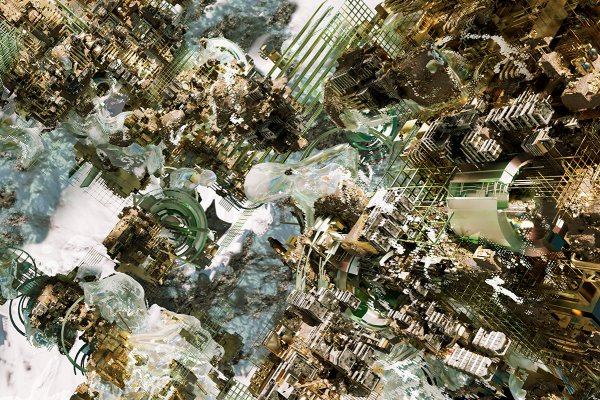The title Desert of Realities quotes a scene in the first, 1999 part of the Wachowskis' Matrix Quadrology, wherein two realities are confronted.
One resembles the one the audience recognizes as theirs, with which they have more or less come to terms; the film presents this as an all-encompassing simulacrum, the Matrix. The other reality is apostrophized as the desert of reality; in contrast to the general reality of experience, this is an apocalyptic landscape of ruins. Thereby the scene refers at the same time to the simulation (by the view opening out of it the difference becomes evident) and a reality which claims to be more real by shaking by the idea of having to suffer this reality.
The duality reality/fiction or simulation has received cultural theoretical attention especially before the turn of the millennium. We are taking it into view again - today with a focus on the reality of what were previously often only speculative, theoretical and extrapolating, often addressed as appearances - for example, on realized systems of artificial intelligence and their broad application, as well as current social developments that are fueling a desertification.
Digital infrastructures and networked technologies have long since become part of everyday life, permeating almost all areas of life. The world seems predictable, our bodies and actions codable.
Responsibility and competencies are willingly handed over to machines (equipped with self-learning programs), whose modes of operation - quasi in return - successively take effect in our bodies and in our consciousness as well as in our social relationships. A new dimension of these processes was reached when we began to grant algorithms ethical-moral decisions. This development gains threatening explosiveness especially in view of autonomous systems (e.g. drones), which can decide about freedom and repression and even about life and death.
With the program Desert of Realities, in addition to looking at political as well as technical formats of "simulation" in the light of the present, a look will also be taken at realities as they become visible in the consequences of climate change, the destruction of huge areas of land in the extraction of raw materials, the pollution of the seas and lakes, of groundwater and springs. Just as in the destruction of nature, the ruinous and ruined has its counterpart in the erosion of social and democratic achievements.
From this perspective, the question arises whether a life as it is largely experienced and lived as real (in Europe) has not long since been indebted to a kind of "matrix". The metaphoric of the desert allows at the same time the question of "water" and "possibilities of irrigation". For - this is what experience and the principle of hope say - deserts can be temporarily and selectively (re)brought to bloom.














